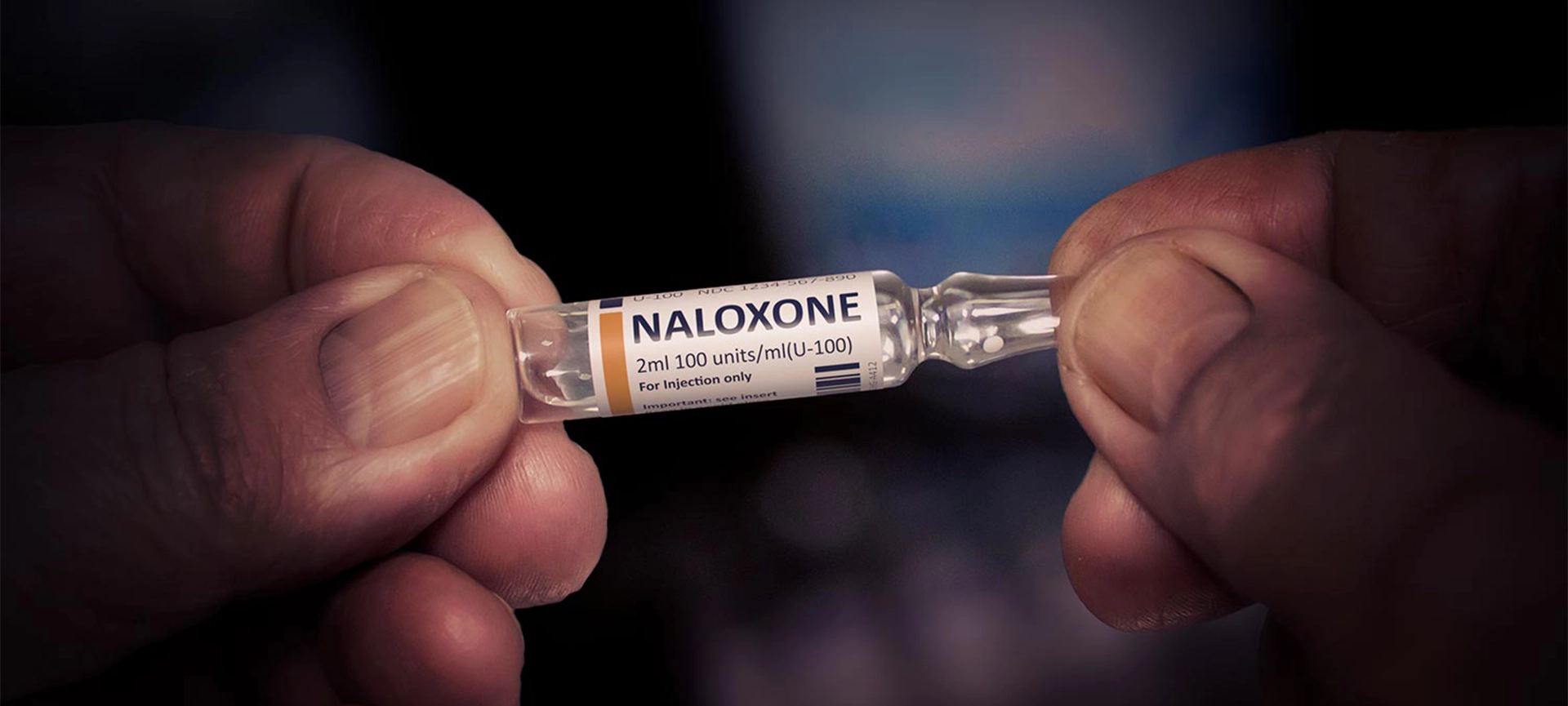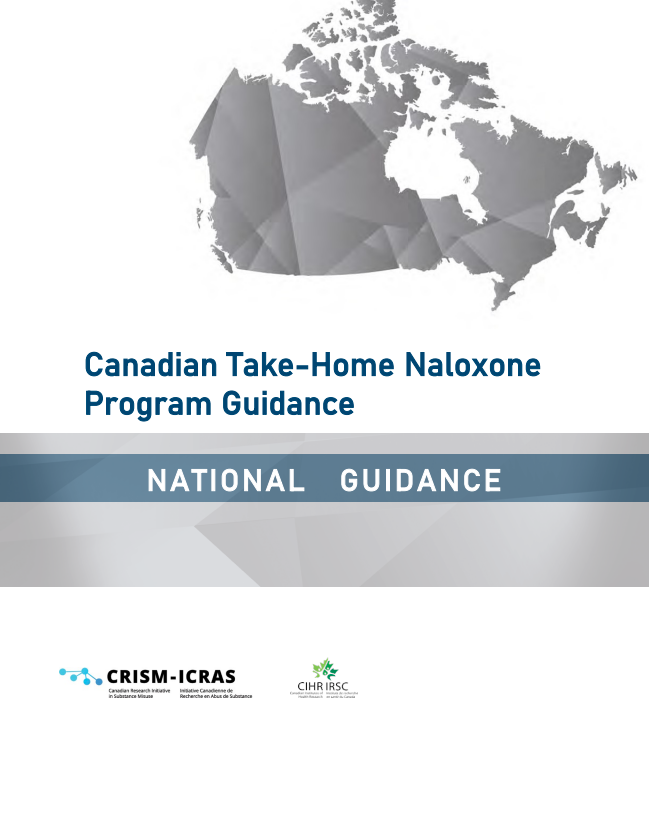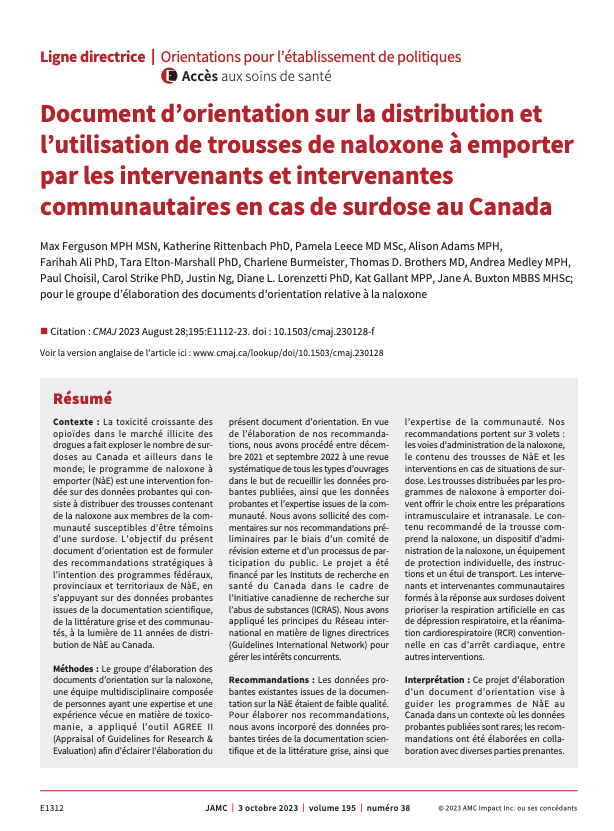Naloxone Best Practice
Guideline
2023
National Guidance
The target audience of this guidance is those who develop, fund, and implement THN programs, including:
- Non-profit and government agencies
- Community overdose responders, harm reduction workers, public health professionals, and clinicians
- Regulatory agencies and other decision-makers

The increasing toxicity of opioids in the unregulated drug market has led to escalating numbers of overdoses in Canada and worldwide; takehome naloxone (THN) is an evidence-based intervention that distributes kits containing naloxone to people in the community who may witness an overdose. The purpose of this guidance is to provide policy recommendations for territorial, provincial and federal THN programs, using evidence from scientific and grey literature and community evidence that reflects 11 years of THN distribution in Canada.
The Naloxone Guidance Development Group — a multidisciplinary team including people with lived and living experience and expertise of drug use — used the Appraisal of Guidelines for Research & Evaluation (AGREE II) instrument to inform development of this guidance. We considered published evidence identified through systematic reviews of all literature types, along with community evidence and expertise, to generate recommendations between December 2021 and September 2022. We solicited feedback on preliminary recommendations through an External Review Committee and a public input process. The project was funded by the Canadian Institutes of Health Research through the Canadian Research Initiative in Substance Matters. We used the Guideline International Network principles for managing competing interests.
Route of Administration: Take-home naloxone programs should offer both intramuscular and intranasal formulations of naloxone, so that people accessing naloxone kits can choose their preferred formulation (Conditional, Very Low)
Kit Contents: All take-home naloxone kits should include:
- A recognizable carrying case;
- Non-latex gloves;
- A rescue breathing mask;
- Instructions on naloxone administration;
- Instructions on how to administer naloxone should be designed in collaboration with people who use these kits. Take-home naloxone programs can use previously developed instructions or develop their own in collaboration with the affected community.
Intramuscular take-home naloxone kits should include:
- Three or more 0.4 mg/ml naloxone ampoules or vials based on program discretion and local experience (more ampoules or vials may be necessary in communities with high prevalence of illicitly manufactured fentanyl and other potent synthetic opioids)
- A syringe and needle for each ampoule or vial of naloxone
- Alcohol swabs
- Ampoule breaker (in kits containing ampoules)
Intranasal take-home naloxone kits should include:
- Two 4 mg/0.1ml intranasal devices
(Strong, Very Low)
Overdose Response: Response to suspected opioid overdose should depend on the skill and comfort level of the responder. People accessing services at THN distribution sites may be trained on overdose response through their peers, using online resources, a cardiopulmonary resuscitation (CPR) training course, or training developed by THN programs.
Trained community responders should follow these steps:
- Apply vigorous verbal and physical stimuli
- Call emergency medical services (EMS)¹
- Administer naloxone
- If the individual experiencing an overdose is in respiratory depression, provide rescue breathing
- If the individual experiencing an overdose is in cardiac arrest, provide conventional cardiopulmonary resuscitation (CPR), including rescue breathing and chest compressions.
THN distribution sites without the capacity to offer overdose response education should direct people to services that provide training, if needed.
(Strong, Very Low)
¹We acknowledge that many people who use drugs do not feel safe calling EMS, especially in jurisdictions where police commonly attend EMS calls for overdose.
²There is differing guidance on the order of naloxone administration and resuscitation. Our recommendation does not address the order of response interventions.


